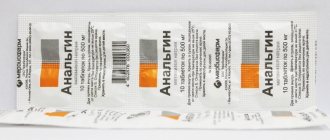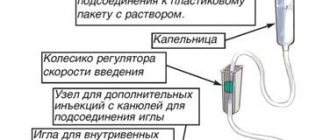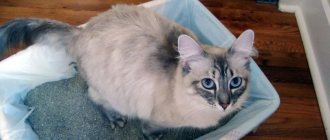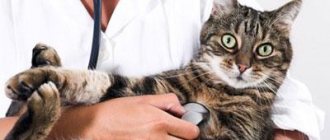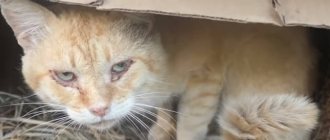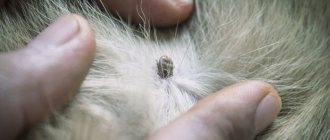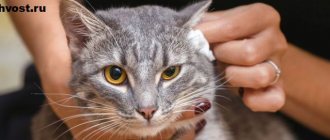Enema of cats
The enema method for both humans and animals involves injecting a certain liquid into the rectum and large intestine to help facilitate bowel movements. The basis of any enema is warm water. To do this, it is recommended to use warm boiled water. Raw tap water can lead to infection.
It is a mistaken belief that liters of water are needed to cleanse the intestines. In fact, the dosage has a purely individual calculation.
The most important thing that an enema should do is to excite the nerve centers responsible for intestinal motility, which will help free it from fecal stagnation.
How to give an enema
Even those veterinarians who recognize the possibility of performing enemas on their own at home warn: this should only be done if you are sure that:
- An enema will not harm the kitten.
- There are no contraindications for an enema.
- The cause of constipation lies solely in diet, and not in disease (for example, volvulus or other disease), structural features of the intestines, or any other reason. Sometimes signs of constipation resemble signs of urolithiasis, so if your kitten has constipation accompanied by difficulty urinating or urine does not come out within 12 hours, you should definitely consult a veterinarian.
- The constipation itself is mild and lasts no more than 2-3 days.
If you do not have this confidence, it is better to contact a veterinary clinic, otherwise you will simply kill the kitten with an enema. There are situations in which an enema is strictly contraindicated - we will talk about them at the end of our material - but only a veterinarian should determine this, as well as identify the cause of constipation (or determine the need for an enema in general).
The enema is done using a small bulb, special glycerin enemas for cats (Mikrolax is most often recommended), or a large 10-20 ml syringe without a needle. with a rubber tube on the spout. Under no circumstances should human enemas be used because they contain phosphates, which are toxic to the kitten.
It is best to administer the enema in the bathroom, in a large basin or on the floor that can be easily washed. You can do this alone, or together with an assistant (the second is probably preferable). In addition to the device you choose for enema, you will need several napkins or rags to quickly wipe the kitten, and a tray to put the baby in immediately after the procedure. It also doesn't hurt to put on clean rubber gloves yourself.
For this type of enema, use water at a temperature of +28-30 degrees or mineral oil. Enema should be done strictly according to the following instructions:
- put the kitten on its back on your lap, turning its head towards you. You need to hold it firmly, but carefully, so as not to inadvertently strangle the animal. At the same time, you can talk affectionately to the kitten and even stroke it - it won’t get any worse.
- raise his tail and lubricate his anal area with Vaseline or baby cream. They can also lubricate the tip of the inserted device.
- Carefully insert the spout of the prepared device inside to a depth of 1-2 cm, no more.
- slowly pour in water in a volume of up to 50 ml or mineral oil in a dosage of 15-20 ml. If you use a special cat enema, then experts recommend introducing its contents in the following volume: first, 1 ml. every 3 seconds so that you ultimately inject 6 ml, and after an hour - the remaining 6 ml. in the same way. Press on the bulb carefully and not too hard - rapid infusions can lead to ruptures and bleeding. If the fluid is difficult to pass, you should stop the procedure immediately - difficulty in passing indicates that there may be a tumor or something foreign in the intestines.
- just as slowly remove the pear, pinch the anus with your tail to prevent water from splashing in different directions, and for greater effect, massage the tummy in the area of the hardened excrement.
- do not let the kitten go until he defecates. The waiting period may vary, sometimes up to 20 minutes.
- if after the first enema not all feces came out (this can be determined by the degree of hardness of the tummy), you need to repeat the same thing after one and a half to two hours. If the second enema does not help, you should definitely take the kitten to the veterinarian.
When passing feces, you should pay attention to whether there is blood in it.
Enema for medicinal purposes
Another type of enemas is considered therapeutic. They are used for more thorough cleansing of the intestines and better penetration of medications into the body.
Only a veterinarian can prescribe such enemas, depending on the condition of the animal. For example, to combat low blood pressure, a weak water-salt solution is used, and to increase intestinal motility, a soap or glycerin aqueous solution is used.
Enemas with petroleum jelly are used to lubricate the intestinal walls and facilitate the passage of feces. A chamomile solution is perfect for relieving inflammation and painful spasms, while a soda solution can reduce acidity and relieve pain.
Types of enemas
Various types of enemas can be used for constipation in cats. Each of them differs in composition and effect on the body. For example, there are ordinary cleansing procedures, and there are medicinal ones that improve microflora, heal microcracks, and soothe pain.
Cleansing solutions include solutions that are used to liquefy stool and remove it from the body.
In the second case, a medicinal solution is poured into the intestines, which has a positive effect on the microflora of connective tissues. After 20 minutes it is eliminated from the body.
Using a rubber tube
In most cases, a cat enema is performed using a gas outlet tube, which is intended for newborns. It can be purchased at pharmacies or pet stores.
The key advantage of this device is its small diameter, which is suitable for treating pets. A large syringe is used to administer the cleaning solution.
With water, Vaseline oil and Microlax
Microlax enema with the addition of petroleum jelly is used not only to cleanse the intestines for constipation. The prepared solution protects the intestinal walls in the presence of microcracks. It facilitates the removal of feces from the body.
With chamomile decoction
A cat enema based on chamomile is prescribed for various diseases. The solution relieves pain, reduces the number of painful spasms, relieves inflammation, and kills pathogens.
Causes of defecation disorders
Very often, various diseases become the causes of constipation in pets. These include diseases of the gastrointestinal tract, kidneys or liver, as well as problems of a neurological and psychological nature.
Constipation must be dealt with immediately, as it can have very disastrous consequences. At this time, the cat may experience heaviness and pain, and it may even lead to intoxication of the entire body, since with constipation, toxins are not eliminated, but accumulate in the animal’s body.
If we look at the statistics, among furry pets cats are more likely to suffer from constipation than cats. In addition, adults are more likely to suffer from problems with bowel movements than young ones.
However, it is worth noting that the most common are irregular problems with bowel movements. If your pet does not have serious illnesses, but is constipated, then the reason may be hidden in the following:
- violation of diet;
- foreign object;
- accumulations of hair in the gastrointestinal tract.
Your cat may need an enema if you begin to notice the following symptoms:
- lethargy;
- lack of appetite or thirst;
- swollen and tight belly;
- no trips to the toilet;
- attempts to defecate without success.
You should pay attention to the fact that cats go to the toilet twice a day. If your pet doesn't go to the toilet at least once a day, it's worth considering.
Causes and symptoms of constipation
Some cats (especially certain breeds) are prone to digestive problems, and, accordingly, to difficulties with bowel movements. Veterinarians call normal bowel movements up to two times a day. The diagnosis of chronic constipation is made if visiting the toilet occurs once every 2-3 days. In this case, laxatives are prescribed, a diet high in fiber is recommended, and a forced bowel movement is performed. To prevent intoxication and dehydration, infusion therapeutic treatment (droppers and injections) is carried out.
The causes of intestinal congestion in cats are various diseases of internal organs (not only the digestive tract, but also the kidneys and liver), endocrine and even psychological disorders. Before treating constipation, you need to find out what caused it, otherwise the therapy will be ineffective and even harmful.
An attentive owner will easily identify the symptoms of a lazy bowel:
- Restless behavior while going to the toilet. The cat begins to make uncharacteristic sounds or meow loudly.
- Frequent, but ineffective sitting in the tray.
- Hard excrement with bloody or mucous discharge.
- Noticeable decrease in appetite.
- The apathetic mood of an animal that stops playing, licking itself, and tries to hide.
- Restless attitude towards caresses, touches in the abdominal area.
Constipation causes stool to accumulate and harden in the colon, making it difficult to empty it naturally. Prolonged absence of bowel movements can cause poisoning of the body due to rotting of food debris inside the intestine.
What should you consider when giving an enema?
So, we have decided in what situations a cat needs an enema. There are points that need to be paid attention to when carrying out this procedure, namely:
- It is necessary to resort to giving an enema in extreme cases. When no other method to ease bowel movements, such as drinking plenty of fluids or taking laxatives, has failed.
- Before carrying out the procedure, you should consult a specialist. He will not only confirm the need for an enema, but also tell you how best to do it.
- You should not carry out the procedure if you are not confident in your abilities. Imagine that your cat is like your child. Just as helpless in this matter. Therefore, if you feel that you are not sufficiently informed or are not ready to do this, it is better to entrust such a matter to someone else, more experienced. This way you will not cause unnecessary discomfort to your pet and will not lose his trust.
Pharmacy enemas
Using a syringe, tube and syringe is a complex process to perform. It is also important not to overfill the liquid. Without experience and knowledge, this is not easy to do. Therefore, it is better to start with pharmaceutical products. You can do enemas with solutions of lactulose-based medications, for example, Duphalac. Suitable for cats: Microlax and Proctum.
The most popular option is Microlax microenema. For an adult cat, it is enough to inject half the tube. To do this, remove the cap and lightly push the liquid towards the tip of the applicator to lubricate the tip. Then the applicator is smoothly inserted into the anus about 1.5 cm. You need to press hard on the tube, as it is quite hard. The microenema takes effect within 5-10 minutes. If there is no result, then the second half of the product is administered after 3 hours.
The Microlax tip is too large for a kitten, so the suspension is administered to the baby using an insulin syringe (1 ml). Half a syringe is enough.
Preparation for the procedure
If you decide to give your cat an enema for constipation at home, then you need to carefully prepare for this. First of all, you will need a rubber bulb, lubricant and salted water.
If everything is clear with a rubber bulb and salted water, then what is a lubricant? It's actually simple. This is a remedy that will help you reduce friction and prevent injury to the mucous membrane. Fat cream, vegetable or Vaseline oil are suitable for this. We will lubricate the tip of the rubber bulb with lubricant.
Now let's prepare the enema solution. Salted water is needed so that it is not absorbed by the walls of the large intestine. We need to take one teaspoon of salt (table or sea) per 300 ml of boiled water.
Manganese, decoctions of medicinal herbs or other special solutions sold in veterinary pharmacies are also suitable as enema solutions. However, their use must be supervised by a veterinarian, without whose prescription their use is prohibited.
We will also need rubber gloves, napkins, cloths and a container in which the cat will remain until the end of bowel movement.
As for choosing a bulb, a small rubber bulb with a volume of up to 100 ml would be preferable. By the way, the nozzle of the syringe should be inserted approximately 2 cm, and the temperature of the solution should be 26-30 degrees.
It is recommended to use the bathroom as a place for treatment procedures. But not all cats like this place in the house. In this case, we can cause even more suffering to our pet. Then you need to choose a place where it will be at least easy to clean up after the procedures. You can, for example, remove the carpet in the room or do it in the hallway.
Preventing constipation
To reduce the number of digestive tract problems in cats, you should pay attention to simple preventive measures. For example, timely grooming will eliminate the formation of hairballs inside the stomach. They can obstruct the passage of feces by accumulating in the gastrointestinal tract. To avoid such trouble, use pastes and phytomines. Well, cats who spend time outdoors cope with this problem themselves: they eat grass, which causes vomiting and eruption of hairballs.
Physical activity plays an important role in preventing chronic constipation. The yard individual runs around the street day and night, but the furry homebody, who does not have access to the street, spends most of his time on the sofa or bed. He moves little, usually eats a lot and is often obese. The owner must keep the cat in good physical shape with the help of animal toys, special exercise equipment and entertainment houses.
It is worth including fiber in your diet: it helps cleanse the body of stagnation and accumulation of feces. If an animal consumes dry industrial food, it must be of the highest quality. Premium canned goods solve the problem of peristalsis well, but do not always guarantee good digestion.
The cat's natural food should be enriched with vitamin and mineral complexes. Low-fat milk products: kefir or cottage cheese should appear regularly in the diet. Pumpkin puree soups with the addition of a small amount of vegetable oil are very useful for pets suffering from sluggish peristalsis. It is important to provide the cat with access to clean drinking water - it has an effect on the dilution of feces and promotes their better excretion.
Enema of a cat at home is allowed only as prescribed by a doctor. He will help determine which solution is best for your pet, suggest an algorithm of actions, and prescribe the frequency and dosage. Forced bowel cleansing has contraindications and is therefore used only after determining the cause of constipation. Prevention involves adjusting the diet, establishing the correct drinking regime and adequate physical activity.
The article is for informational purposes only. Contact your veterinarian!
Stages of the procedure
After you have become familiar with all aspects of this procedure, let's consider the stages of its implementation. Initially, it should be noted that it is better to give an enema to a cat with constipation early in the morning, on an empty stomach.
The first step is to choose the best option for holding the cat during the enema. Veterinarians advise that the animal should stand at this moment and not lie down.
It is advisable that you do not carry out the procedure alone. You can call someone your cat trusts for help. If there is no one to help, place the cat on the hand with which you will not do the enema.
You need to hold the animal firmly, but not cause it unnecessary pain.
After you have decided how you will hold your pet, the second stage begins - the enema itself. We collect approximately 50-100 ml of solution into the pear. It is very important to release any unnecessary air from the enema before administering it.
Next, insert the tip, which was previously generously lubricated with lubricant, into the cat’s anus with a screwing motion. The enema should be parallel to the spine. Do not forget that we are introducing only 2 cm.
After the tip of the syringe is inserted, gradually introduce the solution. If you suddenly incorrectly calculate the volume of the enema, then the excess liquid will simply flow out.
At the final stage, press the cat’s tail to the anus and hold for 15 minutes. During this time, the feces soften and should then come out safely. After 15 minutes, we place the cat in a previously prepared container, where he can empty himself.
It is recommended to repeat the procedure after a few hours to ensure that the animal’s intestines are completely cleansed.
Manipulation technique
To successfully carry out the procedure, you must first study the theoretical part. To give a cat an enema, you need to:
- To disinfect equipment, you need to prepare a weak soda solution (1 tsp per 0.5 liter of water) and boil a bulb or gas outlet tube and syringe in it. After this, the instruments are removed from the liquid and wait until they cool down.
- Next, the medicine is drawn into a bulb or syringe for the gas outlet tube. A basin is prepared over which the assistant will have to hold the pet.
- The animal must be held in the left hand, and the paws must be fixed with the right hand to ensure the most comfortable insertion of the enema tip or gas outlet tube.
- First, you need to release any air bubbles that have accumulated inside the enema tip or gas tube.
- Lubricate the anus and the tip of the enema (gas tube) with lubricant and carefully insert it into the anus to a depth of 1.5-2 cm for an adult animal, for a kitten - no deeper than 1 cm. Now start pouring the solution little by little.
- When administering the solution, hold the tip of the enema (gas tube) parallel to the animal's spine - this will allow it to freely penetrate into the rectum. The liquid should be administered slowly, otherwise the procedure will cause pain.
- After introducing the optimal volume of liquid, carefully remove the tip of the enema (gas tube) and press the pet’s tail to the anus with your finger. You need to keep the kitten in this position for 10-15 minutes. During this time, the solution will be evenly distributed throughout the rectum, the compressed stool will fill with liquid and become softer. If there is blood in the passed stool, then this is a serious reason to contact a veterinarian.
Preparing the necessary supplies and materials
To give your cat an enema, you will need the following supplies:
- To administer an enema to kittens and small cats, use a rubber bulb for douching. This tool comes in 3 sizes, with a rubber or plastic tip. The veterinarian selects a pear according to the kitten’s weight.
- You can also use a thin rubber gas outlet tube in combination with a large-volume syringe (without a needle). The tube is attached to the cannula of the syringe and the solution is injected into the rectum under slight pressure.
- The enema or gas tube must be boiled in a soda solution.
- You will need a basin over which the cat will be held and where she can later empty her intestines.
- For comfortable insertion of the enema tip, a neutral lubricant is used - usually Vaseline or Vaseline oil.
Fixing the animal
An assistant fixes the kitten during manipulations. He should take the baby in his left hand, and with his right hand, hold his hind legs so as to provide maximum access to the anus.
The position of the cat’s body at this moment should be such that it is convenient to hold the enema tip inside it parallel to the spine (see paragraphs 3 and 6 in the “Manipulation Technique” section).
Fluid administration
The solution is administered very carefully and slowly. If the liquid does not flow into the rectum, you should stop manipulation so as not to damage the intestinal wall (see paragraphs 5 and 6 in the “Manipulation Technique” section).
Contraindications for enema
We figured out how to give an enema to a cat. However, this seemingly most common method of getting rid of constipation has its limitations. Of course, only a veterinarian can help you deal with this issue. He will examine your pet's condition and determine whether the cat can have an enema or not.
In general, the enema method cannot be used if:
- inflammations that affect the rectal area;
- tumors or bleeding in the anus;
- volvulus;
- hemorrhoids;
- chronic diseases of internal organs;
- mechanical damage to the intestines;
- severe helminthic infection;
- disturbances in the functioning of the heart.
Contraindications
Enema - as a means of combating constipation is contraindicated in the following cases:
- tumors in the intestines;
- inflammatory process in the gastrointestinal tract;
- volvulus, acute obstruction;
- foreign body in the digestive tract (usually bone);
- pregnancy.
An enema is contraindicated for a cat if feces are excreted in small quantities and are black in color. This is a sign of internal bleeding in the upper digestive tract.
Prohibited drugs for animals
As you may have noticed, there are now countless medications and remedies available to relieve constipation. However, not all of them can be given to pets.
For example, aloe vera rectal suppositories are very good for humans, but they cause severe allergic reactions in animals.
Castor oil is also contraindicated for animals. Despite the fact that it has recently enjoyed popularity, numerous cases of poisoning and diarrhea among animals have been recorded.
For humans, magnesium sulfate (“Epsom salt”) has a mild laxative effect, but for animals its use is fraught with severe and sudden intestinal disorders.
Hibiscus tea is the most controversial remedy. Although people give it to their pets for constipation, it does not bode well for them. It can cause severe intoxication and diarrhea.
It must also be remembered that one-time constipation remedies are not suitable for long-term use. In such situations, giving a cat an enema is the least harmful option for eliminating fecal stagnation.
How to tell if your cat has a problem
A litter tray that has not been filled with feces for more than 3 days will indicate that your pet is constipated. Even if there is a small amount of feces there, it will be dry and cracked.
Problems with defecation are accompanied by deviations in the cat’s behavior:
- the animal behaves restlessly, regularly runs to the tray, but nothing works out for it;
- a crowded intestine affects appetite, which worsens or is completely absent;
- the cat becomes apathetic to affection and games.
The pet's general condition worsens, nausea may occur, leading to vomiting. If you look at the cat's belly, you will notice how much it has increased in volume. The slightest touch causes discomfort in the cat, causing it to bend its hind legs.
What can replace an enema?
In cases where giving a cat an enema at home or in a veterinary clinic is contraindicated, there are the following drugs that can replace it. Among them:
- Suppositories with glycerin. Thanks to the active substance, feces in the animal’s intestines are lubricated, which facilitates their easier exit. Glycerin also attracts water into the large intestine, thereby helping to soften feces.
- DocuSol. This drug is intended for children. In addition to glycerin, the drug contains sodium docusate and polyethylene glycol. The product is a dispenser syringe containing 5 ml of solution. It needs to be slightly warmed in your hands and inserted into the cat's anus.
- FLEET. These are also glycerin-based suppositories. Its content in suppositories is quite high, so half a suppository will be enough for a cat.
- MICROLAX. Sold in the form of microenemas of 5 ml containing a mixture of various substances. All of them are used to treat animals, so this remedy can be used for cats. You need to administer the Microlax enema to your cat gradually, as strong pressure can damage the mucous membrane.
When should you do an enema?
As a rule, assistance to the animal in the form of an enema is necessary for mild constipation (no stool for 2 - 3 days). The purpose of the procedure is to cleanse the contents of the large intestine and eliminate the accumulation of feces from the rectum.
There are many reasons for chronic constipation: from a lack of fiber in food and an unbalanced diet to foreign objects entering the intestines. The occurrence of constipation is accompanied by rare bowel movements or a complete absence of stool.
Before you are puzzled by the question of how to give an enema to a cat, you need to understand that this procedure is necessary for the animal and will not cause harm. To do this, you should know the symptoms of constipation:
- Anxiety when visiting the litter box. The cat may meow and even scream in pain.
- Frequent and unsuccessful visits to the toilet.
- Dry and hard feces, sometimes mixed with mucus and blood.
- Poor appetite or lack of it.
- Lethargic state. The animal stops licking itself and avoids communication.
- Touching the belly causes anxiety in the cat.
When constipation occurs, feces become compacted in the large intestine, making natural bowel movements difficult and almost impossible. This condition leads not only to the pet’s anxiety when visiting the toilet, but also to general intoxication of the body.
We recommend reading about what to do if your cat has diarrhea. You will learn about the causes of diarrhea, first aid for a pet, and feeding rules. And here is more information about why a cat has bloody stool and what to do about it.
Some domestic cats are prone to constipation. Veterinary experts believe that a healthy adult animal should have bowel movements twice a day. Having a bowel movement once a day indicates a predisposition to constipation. Defecation every 2-3 days is a symptom of a chronic pathological condition of the intestines.
To help an animal with chronic constipation, laxatives are used, a special diet is prescribed, and the intestines are cleansed of feces. Often, the pet is prescribed infusion therapy to relieve signs of dehydration and intoxication.
After examination and exclusion of pathologies such as intestinal obstruction, neoplasms, and if there are appropriate indications (no bowel movements for more than 2-3 days), a cleansing enema is performed in a veterinary clinic. Indications for manipulation are:
- chronic constipation;
- intoxication of the body due to poisoning;
- inflammatory phenomena in the intestines.
Veterinary specialists distinguish between two types of enemas: cleansing and medicinal. The former are necessary for removing feces from the large intestine. The liquid used dilutes the stool blockage, enhances peristalsis and removes contents from the body.
A medicinal enema involves the introduction of medicinal drugs into the large intestine for local therapy. This type of procedure is prescribed only by a veterinarian. A medicinal enema is used for inflammatory bowel pathologies. To carry it out, professional knowledge and skills are required.
You can do a cat cleansing enema at home yourself only if this procedure is recommended by a veterinarian after examining your pet.
What do the professionals advise?
Here are a few recommendations that veterinarians give regarding cat enema.
- Experts consider early morning to be the most optimal time for the procedure.
- During the procedure, talk to your cat, stroke him, try to calm him down. Your tone should be calm and measured.
- Veterinarians recommend combining a massage of the abdomen under the pelvis with an enema. This way you help the passage of stool.
- It is also necessary to observe what kind of feces come out after the enema. If you notice blood or other signs of abnormalities, you should urgently seek help.
What is an enema?
In veterinary medicine, this term refers to a procedure that involves introducing water, other liquids or solutions of veterinary drugs through the anus into the rectum. Manipulation is carried out in two ways:
- using standard enema tips;
- directly into the colon using long intestinal tubes or deep enema tips.
This procedure is classified into types according to the purpose of implementation, quantity, temperature and composition of the injected solutions. This term also refers to an instrument used in veterinary practice. It is a device that is designed for administering an enema. It is used to cleanse and rinse the rectum and colon or to administer solutions of veterinary medications.
How to give an animal an enema?
It is unlikely that any cat will like this procedure. It is common for cats to struggle when trying to insert the tip of a syringe into their anus. At this moment, the angry animal can seriously injure the “tormentor”. To prevent this from happening, you need to call someone for help.
You can act alone. To do this, you need to wrap your pet in a sheet or blanket, leaving the anus open. You need to swaddle your four-legged pet so that it is immobilized but can breathe freely.
Next you need to proceed according to the following scheme:
- Squeeze the pre-boiled pear, lower its spout into the solution and draw in exactly as much as will fit into the syringe.
- Holding the animal over a wide container for emptying, place it on your left hand and hold its paws with your right. These actions should be entrusted to an assistant. If the cat has a calm character and there is complete confidence that it will withstand the unpleasant manipulation with dignity, you can cope on your own. To do this, you need to take the pet with your left hand, the right one must be free for the procedure.
- Lightly press the syringe until a few drops of solution come out. This measure is designed to remove excess air from it.
- After liberally lubricating the tip of the pear with Vaseline, rich cream or vegetable oil, slowly insert it into the cat's anus. The tip should be inserted no more than 2 cm into an adult animal, and 1 cm into a kitten. Before insertion, it is recommended to make a corresponding mark on the tip. The cat's intestines are located parallel to the spine, so when performing manipulations you need to stick to this direction.
- Slowly press down on the bulb, completely releasing all its contents.
- Smoothly remove the tip of the syringe from the anus of your four-legged pet, pressing its tail tightly against the sphincter. To fully soften the stool, it is recommended to restrain your pet’s urge to have a bowel movement for several minutes. After this time, holding it over a container that replaces the tray, you need to let it empty.
When carrying out the procedure, a kitten or adult cat must observe the following safety precautions:
- insert the tip of the bulb slowly;
- if the cat experiences pain, stop the manipulation immediately;
- if there is the slightest difficulty in advancing the syringe tip, stop the procedure immediately, otherwise you may injure the cat’s colon;
- if blood appears in the stool during defecation, show your pet to a veterinarian as soon as possible;
- perform the manipulation in the morning before feeding the cat.
A few words about the causes of constipation
Before moving on to explaining how to properly give an enema to a kitten, I would like to outline a few more reasons why a pathological condition of the body occurs when feces are retained in the intestines, causing discomfort in animals.
Chemostasis is the accumulation of chyme mass in the small intestine. The main factor leading to the disease is prolonged feeding of solid food. It can occur with a sedentary lifestyle, a lack of mineral salts in the body, or the absence or insufficient amount of water in the diet.
Coprostasis is stagnation of dried feces with subsequent blockage of the lumen of the small intestine. Feeding bones contributes to the development of pathology.
Intestinal obstruction - characterized by blockage of the intestines with stones, intestinal stones, worms, wool, and accidentally swallowed objects. The reasons are monotonous feeding and metabolic disorders.
When is a doctor needed?
It is better to take the kitten to the veterinarian as soon as symptoms of the pathology appear. The need for an enema should be determined by a specialist; sometimes such a measure will be useless and even dangerous. If there is a suspicion that the cat has swallowed a foreign object that could be stuck in the intestines, it is necessary to show the pet to a doctor, since in some cases the only treatment option is surgical removal of the stuck body.
You will have to contact a veterinarian if there are contraindications to the use of enemas. In addition, you will have to go to the veterinary clinic if the procedure does not bring the desired effect. If the owners do not know how to give an enema, it is also better to contact a specialist.
When is it prohibited to give an enema?
An enema for a cat with constipation is strictly contraindicated in the following cases:
- vomit;
- increased body temperature;
- dehydration;
- dyspnea;
- severe abdominal pain (“acute abdomen”);
- signs of heart failure;
- inflammation or damage to the mucous membrane of the anus or the skin around it;
- poor general condition (loss of consciousness, convulsions, severe weakness).
You cannot give an enema to pregnant cats at any stage of gestation . Cleansing enemas are used with caution for helminthic infestations.
What to prepare for an enema?
To perform an enema on a four-legged pet at home, you will need:
- A special rubber bulb for douching. It is recommended to use a tool with a rubber tip. Unlike a plastic tip, a tip made of rubber does not injure the pet’s anus. Some cat owners prefer to carry out the procedure using a tube designed to remove gases in newborn babies. This device is a thin, hollow rubber tube that can be easily inserted into the anus with the help of lubricant. Its main advantage is its small diameter.
- A container for preparing liquid that will be injected into the animal's rectum.
- Solution for administration. Information about what components and how to prepare it is presented in the table below.
- Water thermometer for measuring the temperature of the injected composition. It should be between 25–30°C.
- Vaseline, any thick cream or vegetable oil to lubricate the tip of the bulb for easier and painless insertion into the cat's anus.
- Disposable rubber gloves.
- Wide capacity used for household purposes. It will serve as a replacement for the tray.
Recipes for solutions for rectal administration to cats:
| Solutions | Ingredients | Component dosages | Preparation |
| Saline | Table or sea salt | 1 tbsp. l. | Dissolve 1 tbsp in 300 ml of water. l. salt. |
| Water | 300 ml | ||
| Chamomile infusion | Dried chamomile flowers | 1 tbsp. l. | Pour boiling water over dry raw materials. Strain the mixture infused for 15 minutes through several layers of gauze. |
| Water | 1 glass | ||
| With lemon juice | Freshly squeezed lemon juice | 1 tsp. | Mix the ingredients. |
| Water | 300 ml | ||
| With vinegar | Apple vinegar | 0.5 tsp. | |
| Water | 300 ml | ||
| With Vaseline oil | Vaseline oil | 2 tbsp. l. | Mix water with heated oil. |
| Water | 300 ml | ||
| With glycerin | Liquid glycerin | 5 drops | Mix glycerin with slightly heated liquid. |
| Water | 300 ml |
